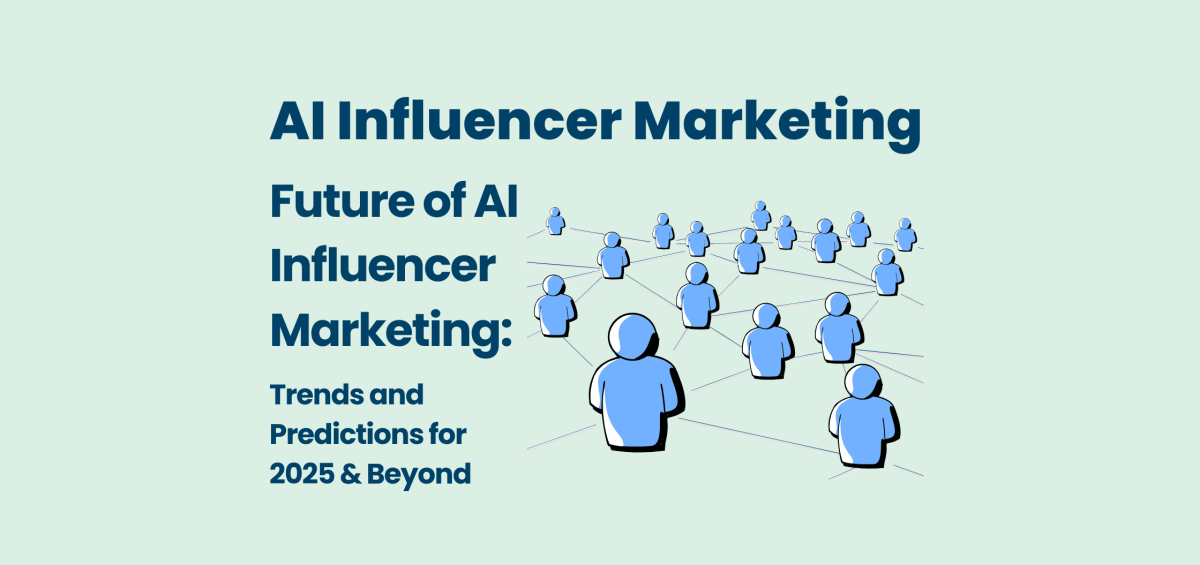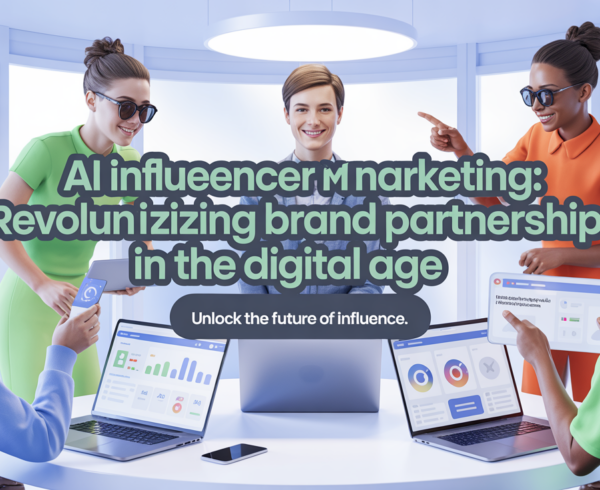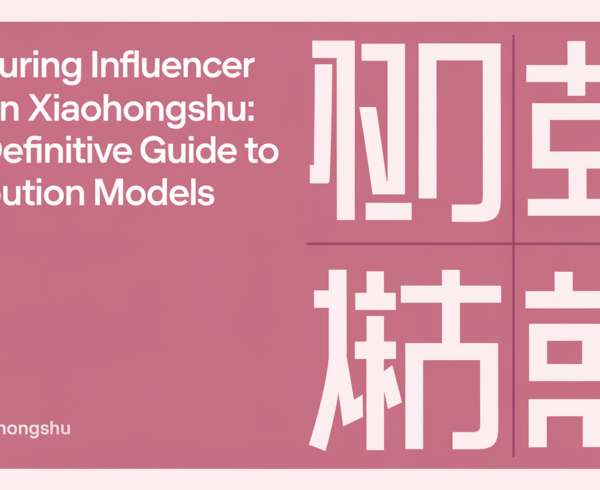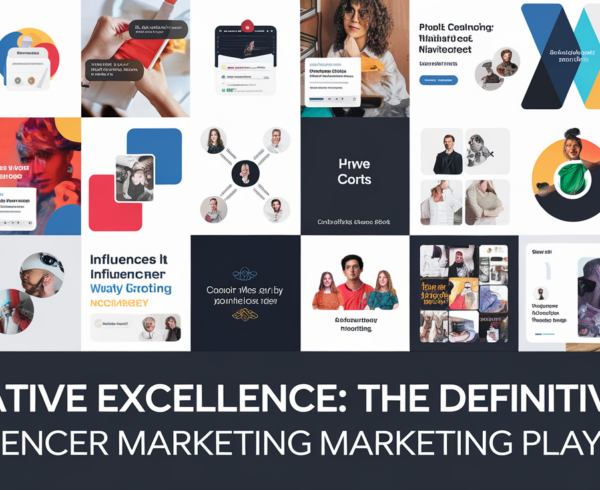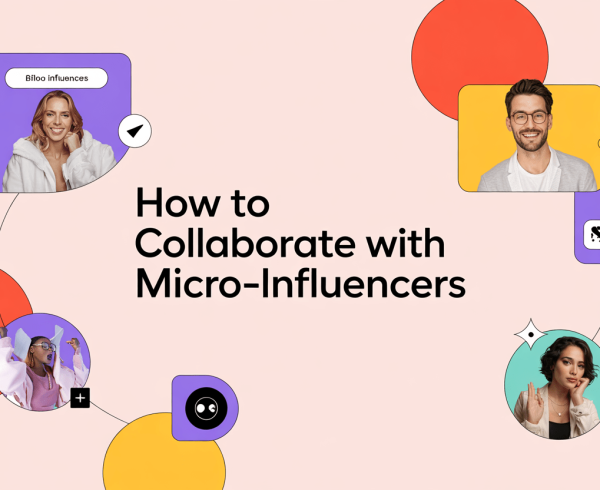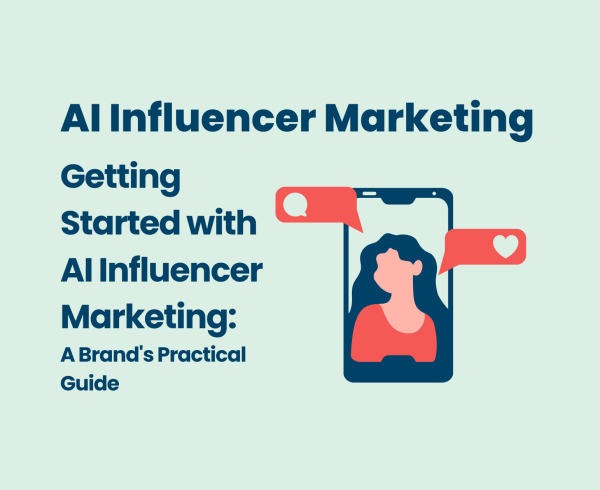Peering into the Crystal Ball: What are the Future Trends Shaping AI Influencer Marketing?
The world of AI influencer marketing is evolving at a breakneck pace. What seems like science fiction today could become mainstream tomorrow. For digital marketers looking to stay ahead of the curve, understanding the emerging trends and future possibilities in this dynamic field is paramount. So, the question is: what does the future hold for AI influencers and their impact on the marketing landscape? Let’s gaze into the crystal ball and explore some of the key trends and predictions:
1. The Era of Hyper-Personalization: Will AI Tailor Influencer Experiences to Individuals?
One of the most exciting future trends in AI influencer marketing is the potential for hyper-personalization. Imagine AI influencers who can adapt their content, messaging, and even their appearance to resonate with individual users on a one-to-one basis. AI algorithms will likely become sophisticated enough to analyze user data, preferences, and behaviors to create highly tailored and engaging experiences. This level of personalization could lead to unprecedented levels of audience connection and engagement, offering digital marketers the ability to deliver truly relevant and impactful content through their virtual ambassadors.
2. The Rise of Niche Expertise: Will We See Highly Specialized AI Influencers Emerge?
As the AI influencer market matures, we can expect to see the emergence of highly specialized virtual personalities catering to niche audiences and specific industries. Instead of generalist AI influencers, we might see experts in fields like sustainable fashion, quantum computing, or even ancient history, all brought to life through AI. This specialization would allow brands to target very specific demographics with a virtual influencer who possesses deep knowledge and credibility within that particular niche, offering digital marketers more focused and effective targeting capabilities.
3. Blurring the Lines of Reality: Will AI Achieve Photorealism and Seamless Interaction?
Advancements in CGI, motion capture, and AI algorithms are rapidly making virtual influencers more lifelike. In the future, it’s likely that the distinction between AI and human influencers will become increasingly blurred, with virtual personalities achieving photorealism and exhibiting incredibly nuanced and human-like behaviors. Furthermore, advancements in natural language processing and interactive AI will enable more seamless and engaging conversations between AI influencers and their audiences, making the interactions feel increasingly natural and authentic, as suggested by the increasing human-like qualities of virtual influencers discussed in the “Human versus virtual influences, a comparative study.”
4. AI-Powered Content Co-creation: Will Brands and AI Collaboratively Generate Marketing Magic?
The future might see a rise in AI-powered content co-creation, where brands and AI influencers work together to generate marketing materials. AI could assist with brainstorming ideas, drafting scripts, creating visuals, and even optimizing content for different platforms. This collaborative approach would leverage the creative power of humans with the efficiency and data-driven insights of AI, potentially leading to more innovative and effective marketing campaigns.
5. Integration into the Metaverse and Web3: Will AI Influencers Become Native to Virtual Worlds?
As the metaverse and Web3 technologies continue to evolve, AI influencers are poised to become integral inhabitants of these virtual spaces. They could host virtual events, conduct product demonstrations in VR environments, and interact with users in immersive and engaging ways. Their inherent digital nature makes them perfectly suited for these emerging platforms, offering digital marketers new and exciting avenues to reach and engage with audiences in the evolving digital landscape, as hinted at in the “AI influencer marketing may pose risk to brand trust, new research finds” article regarding virtual influencers in the metaverse.
6. The Evolution of Ethical Frameworks: Will Clear Guidelines Govern the Use of AI Influencers?
As the AI influencer market grows, the need for clear ethical guidelines and regulations will become increasingly important. Issues such as transparency, disclosure, data privacy, and the potential impact on human creators will need to be addressed. The future will likely see the development of industry standards and potentially even legal frameworks to govern the use of AI influencers, ensuring responsible and ethical practices that protect both consumers and creators, as suggested by the discussion on the need for tighter control and greater transparency for virtual influencers.
7. Predictive Analytics for Future Success: Will AI Forecast the ROI of Influencer Campaigns?
Building on current trends, future AI tools will likely offer even more sophisticated predictive analytics capabilities for influencer marketing. Digital marketers will be able to leverage AI to forecast the potential ROI of AI influencer campaigns with greater accuracy, allowing for more informed budget allocation and strategic decision-making. This ability to predict campaign success will be invaluable for optimizing marketing spend and maximizing results.
8. Democratization of AI Influencer Creation: Will Brands Easily Create Their Own Virtual Ambassadors?
Just as AI is democratizing content creation, we might also see a democratization of AI influencer creation. In the future, it could become easier and more affordable for brands of all sizes to create their own customized AI influencers using user-friendly platforms and tools. This would empower more brands to directly leverage the benefits of virtual influencers without necessarily relying on pre-existing AI personalities.
9. The Blended Reality of Influence: A Seamless Coexistence of AI and Human Creators:
The future of influencer marketing is unlikely to be a zero-sum game between AI and human influencers. Instead, we will likely see a blended reality where both types of creators coexist and collaborate in various ways. AI influencers might assist human creators with content production or provide them with valuable data insights, while human influencers will continue to offer the authenticity and emotional connection that resonates deeply with audiences. Digital marketers who understand how to strategically leverage this blended reality will be best positioned for success.
10. The Unforeseen Innovations: What Unexpected Breakthroughs Await in AI Influence?
While we can predict some of the future trends in AI influencer marketing, the rapid pace of technological advancement means that there are likely to be unforeseen innovations that will further transform the landscape. From entirely new forms of virtual engagement to unexpected applications of AI in influencer marketing, the future holds exciting possibilities that digital marketers need to be prepared to embrace.
In conclusion, the future of AI influencer marketing is brimming with potential. From hyper-personalization and niche specialization to enhanced realism and seamless integration with emerging technologies, AI is poised to revolutionize how brands connect with their audiences. By staying informed about these future trends and proactively adapting their strategies, digital marketers can harness the power of AI influencers to drive innovation and achieve unprecedented marketing success in the years to come.

